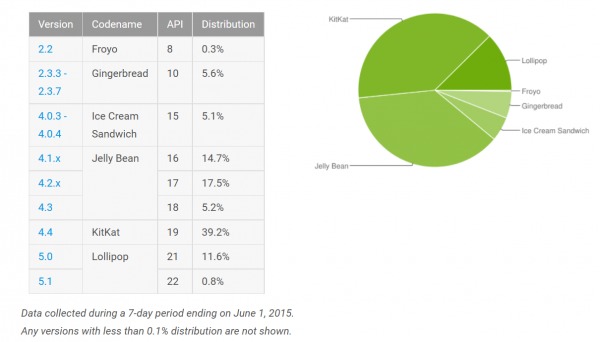
Google has just released the figures for Android’s spread as of June 1 this year and it’s business as usual in our part of the mobile world. No hidden surprises and no great changes either. But that does mean that Android Lollipop, both 5.0 and 5.1, continue their positive growth while everything else goes down. Android 4.4 KitKat retains its crown as the most used version, continuing to hold down the Jelly Bean triplets. And Froyo still refuses to give up the ghost while Gingerbread continue down the slope.
The Android distribution numbers give some insight into the spread and rate of adoption of different Android versions over a period of time. In addition to versions, Google also has figures for device screen sizes. These metrics provide app developers with valuable information on the most used Android API versions in order to maximize the features in their apps.
Sadly, the Android Distribution chart also reveals that ugly side of Android commonly known as fragmentation. The fact that app makers have to actually mind which Android versions to target is already an unfortunate situation. The good news is that, while little can be done to fix the diverse device sizes in the market, the fragmentation of platform versions seems to be on its way to being resolved. It won’t happen overnight or even over half a year, but it’s happening slowly and surely.

Of the “ancient” versions, Gingerbread was once king, but now it’s steadily on its way out, though it will probably take some time before it disappears completely. Of the newer generation, the combined space taken up by Jelly Bean used to lord it over all the others, but now KitKat has surpassed it. Lollipop also grows steadily, now at almost 12 percent, up from last month’s almost 10 percent. Together, KitKat and Lollipop make up half of the pie, which bodes well in terms of adoption and defragmentation.
SOURCE: Google









